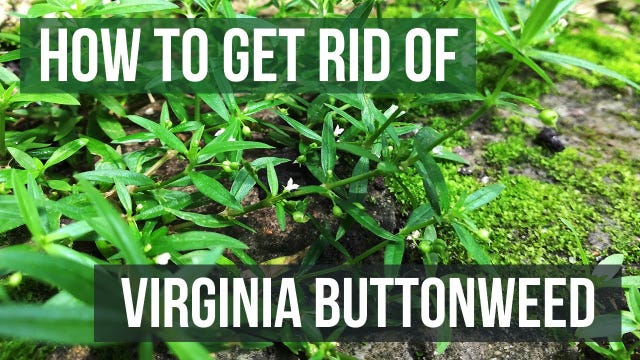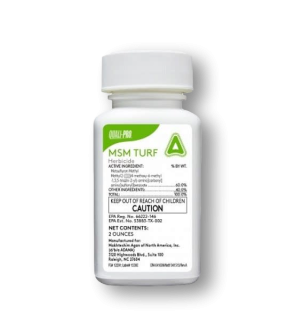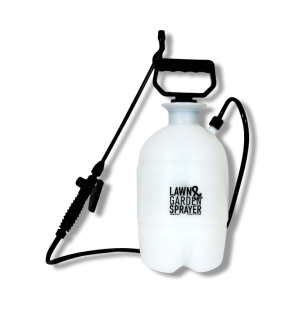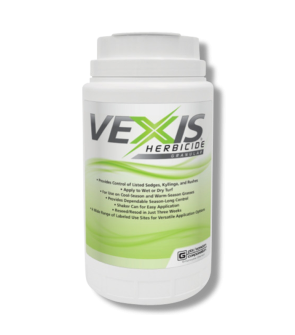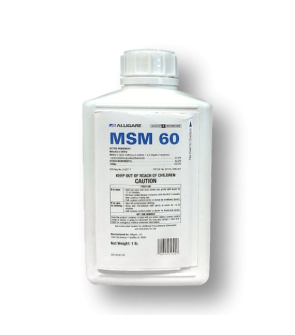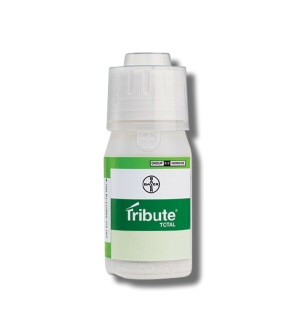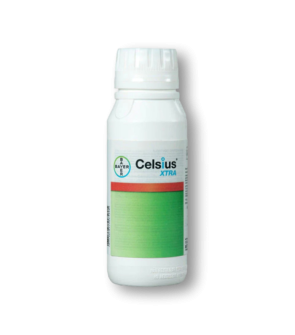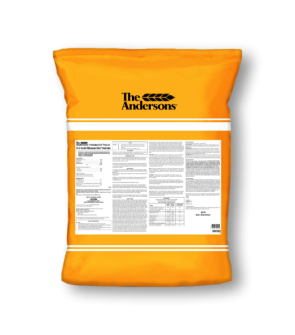Gain access to personalized product screening, the best pricing, rewards, and more!
Most Effective Products
Virginia Buttonweed Control: How to Get Rid of Virginia Buttonweed
Virginia buttonweed is one of the leading weeds that invade lawns in the southern part of the U.S. and can creep and spread onto lawns quickly. Virginia buttonweed is a warm-season perennial weed that grows in spring and through the summer. By the time fall arrives, the thick, matted growth from Virginia buttonweed can actually crowd out lawn grass in patches where it grows.
Not only does Virginia buttonweed produce seeds, but it also spreads through underground root systems called rhizomes. The weed is a vigorous grower and can easily tolerate very close mowing. When mowing it, if you leave the broken pieces of the plant where they have been cut, they can go back into the ground and reroof and continue the spreading.
If you have Virginia buttonweed on your lawn, our step-by-step DIY guide will show you exactly what you need to kill it quickly and affordably.
Identification
Before you can apply herbicides, you need to identify Virginia buttonweed properly. Misidentification can lead to using the wrong herbicides for the job, costing you time and money. Below are some facts and traits of Virginia buttonweed you must remember for proper identification.

- Virginia buttonweed is identified by its oppositely arranged leaves connected by a membrane across the stem with several bristly stipules.
- Their leaves are stemless, up to 2 1/2 inches long and 1 inch wide. In the summer, Virginia buttonweed blooms with white, star-shaped, hairy, four-petal stemless flowers and a 1/2 inch long.
- Virginia buttonweed is a deep-rooted perennial with prostrate or spreading branches. Its leaves are thicker and opposite without petioles and can be slightly rough along the margins.
Use the above description and image to help you properly identify Virginia buttonweed. If you are having trouble, you can always contact us, and our lawn care experts will help you correctly ID your weed growth and suggest treatment options.
Inspection
After you have identified the Virginia buttonweed, you will need to perform an inspection to locate where the Virginia buttonweed is growing, how severe of an outbreak there is, and what conditions are helping Virginia buttonweed to thrive. This will help you to determine what cultural changes you should make and where you should focus your herbicide treatment.

Where to Inspect
Virginia buttonweed is produced by seed, root fragments, and stem fragments and often indicates poorly drained soils. It is a problem primarily in transition zones and warm-season areas. It's a creeping, spreading perennial weed that covers large areas over a short period.
This weed is known to spread through root systems called rhizomes, which means it can creep underground and pop back up into a new area.
Virginia buttonweed can also spread when you mow the lawn as pieces break off, and if you're not bagging your clippings, they can re-establish or replant into the ground. Branch stems are usually hairy, and leaf blades are dark green on the top and lighter green on the bottom.
What to Look For
It would be best if you were looking for oppositely arranged leaves that are stemless. If they have matured, you will see a small white star-shaped flower.
Treatment
Before using any herbicide product, make sure you have the proper personal protective equipment (PPE).
Because Virginia buttonweed can spread by seed and rhizomes, hand-pulling it will not successfully remove it. The best option is to use a post-emergent herbicide and spot-spray it rather than making a blanket application, which risks damaging the desired turf.
Our top recommendation is a broadleaf weed killer such as MSM turf herbicide, which is an economical option focused on targeting broadleaf weeds.
If you want to treat Virginia buttonweed on a larger scale, we recommend Fahrenheit Herbicide. This water-soluble granule offers more variety to control Virginia buttonweed because it can be applied at various rates and even be used to treat acres of land. Fahrenheit is also only labeled for use on warm-season grasses, which works well since Virginia buttonweed is a broadleaf weed.
Step 1: Mix Herbicide and Apply To The Treatment Area

MSM Turf Herbicide is a high-quality granular product that covers 43,560 sq. ft. of area (1 acre). Apply 0.5 to 1 fl. oz. of product per acre.
Determine how much herbicide to use by measuring the square footage of the treatment area. For square footage, measure the treatment areas' length and width in feet, then multiply them (length X width = square footage). For acreage, divide the square footage by one acre (square footage / 43,560 sq. ft. = acre).
For broadcast applications with Fahrenheit, you will apply 6 to 12 oz. of product per 20 to 80 gallons of water per acre. For general spot applications, with Fahrenheit, you will apply 0.2 ounces of product per 1 gallon of water per 1,000 sq. ft.
To mix, fill your sprayer halfway with water, add your measured amount of product, and then fill it with the remaining water until it is filled. Shake your sprayer to mix well, and pump to produce a low-pressure spray.
Lightly spray your herbicide solution where Virginia buttonweed is established. Use a fine spray with a fan nozzle setting for an even coating. Spray on a calm day when wind speeds are low to minimize drift.
It's best to apply products when temperatures are under 85 degrees, as temperatures higher than 85 degrees may damage the grass you wish to keep. Expect some yellowing of your grass after application. Don't be alarmed by it, as it will be temporary, and your grass will soon be able to pop back out of it.
Step 2: Follow Up Application
Virginia Buttonweed can be difficult to control because of its extensive root system, so repeated applications may be necessary to kill it completely.
Check back in 7 to 10 days and reapply until the plants completely die off. Since Fahrenheit is a stronger herbicide, you must re-applicate every 4 to 6 weeks.
Prevention
After Virginia buttonweed has been removed, ensure it does not return with the following preventative measures:
- Reducing soil moisture is a start to prevent Virginia buttonweed from coming back, as Virginia buttonweed likes wet soils. Water your grass deep but infrequently.
- Also, promote practices such as mowing high and fertilizing, as this will go a long way and keep your lawn strong enough to withstand Virginia buttonweed and other invasive weeds during the growing season.
Key Takeaways
What is Virginia Buttonweed?
- Virginia Buttonweed is a perennial broadleaf weed that is hard to control because it rapidly produces seeds and spreads through underground root systems called rhizomes.
How To Get Rid of Virginia Buttonweed
- We recommend MSM Turf Herbicide to treat Virginia buttonweed. This product is easy to mix and apply, systemic, and will kill the plant down to the root.
Preventing Virginia Buttonweed Reemergence
- To prevent Virginia buttonweed, address moisture issues, mow at a higher height, and ensure your grass is nutrient-rich and healthy.






